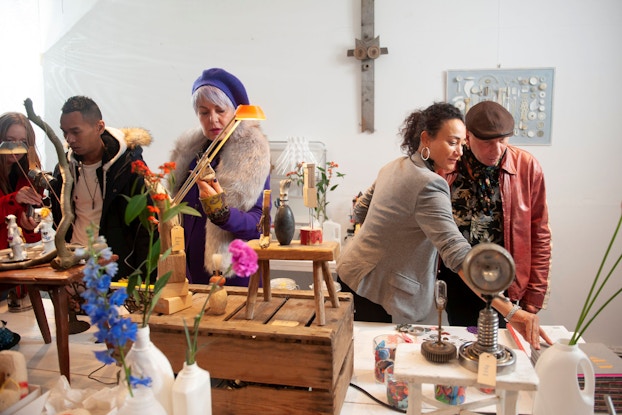
Pop-up shops are a great way to test a new business idea, explore expanding to a new location, or introduce your product to new customers. While it takes significantly less effort to launch a pop-up than to open a brick-and-mortar location, pop-ups still take a fair amount of planning. This quick guide can help you lay the groundwork for your next pop-up event and ensure it's a success.
What is a pop-up shop?
In case you aren't familiar with the concept, pop-up shops are temporary retail spaces that appear for a limited time. Pop-up shops offer unique, often exclusive, customer experiences.
"By occupying spaces for a short duration, businesses can generate excitement and buzz, tapping into the psychology of scarcity to drive consumer interest," reported Mailchimp.


Merchants that create pop-up experiences largely consider them beneficial. Data from CapitalOne Research shows that 80% of retailers that opened a pop-up shop considered it a success; moreover, nearly 60% plan to open another pop-up.
Types of pop-up shops
Pop-ups can serve a variety of purposes, and there are different types depending on your business goals. Some merchants organize their pop-up thematically, creating a holiday pop-up, a seasonal experience, or one tied to a promotional campaign. Others use location-based formats, hosting a pop-up in an event space, a kiosk within a store, or even on social media.
[Read more: Pop-Up Store Experiences That Blend Physical, Digital Worlds Woo Pandemic-Changed Shoppers]
Data from CapitalOne Research shows that 80% of retailers that opened a pop-up shop considered it a success; moreover, nearly 60% plan to open another pop-up.
What do you need for a successful pop-up shop?
Use this high-level pop-up checklist to make sure you have the basic ingredients you need to open a pop-up location.
Business goals
The first step in opening a pop-up is to figure out what you hope to achieve with one.
"Clearly defined objectives, whether focused on sales targets, brand awareness, or customer engagement, guide every aspect of the pop-up store, from location selection to marketing strategies," wrote Mailchimp.
Pop-up shops can meet a number of different needs, such as:
- Testing a new product or new product update.
- Meeting customers in person and collecting feedback.
- Testing marketing and branding tactics.
- Nurturing relationships with sales leads.
- Conducting product demos and education
"Without the hassle that comes with a traditional store, you can showcase your product, build brand awareness, and extend a human connection to your consumers with your physical presence," Ray Ko, the Senior eCommerce Manager of ShopPopDisplays, told Lightspeed.
Location
First and foremost, you need a location where you can host your pop-up. Your location could be physical or digital; physical pop-ups can be hosted in event spaces, festivals, farmers markets, mall kiosks, or even in a trailer or renovated shipping container. You could also partner with another business and host an event in their retail space.
Digital, or virtual, pop-ups work too. These experiences offer interactive shopping, usually with augmented reality or virtual reality, where customers can browse products in a digital storefront. This option takes a little more technical work to set up, but e-commerce platforms like Shopify make it possible.
Consider the foot traffic, rental costs, and proximity to your target customer as you vet different locations for your pop-up.
Permits
Physical pop-up shops might need a temporary business license, a vendor permit, a zoning permit, and/or other licenses in order to operate. Budget for these fees as well as any insurance you may want to protect your temporary location.
Marketing
Marketing plays an outsized role in the success of a pop-up shop. Because your space is temporary, it's crucial to bring people in as early as possible to build buzz and boost sales.
"There's no such thing as too much marketing for a pop-up shop," wrote Square. "Since you'll only be there for a short period of time, you want as many customers to know about it as possible. And if your pop-up shop has a theme or is timely or seasonal, you can use that to your advantage in your marketing efforts."
Equipment
There won't be as much equipment to get as if you were opening a pop-up restaurant, but you still need a few basics. Shelving or racks, dressing room curtains, tables and chairs, and a mobile point of sale might be on your procurement checklist. See if there are display components you can rent or borrow from a partner or existing location to keep costs down.
[Read more: Nothing Temporary Here: Pop-up Retail Is a Marketing Mainstay]
CO— aims to bring you inspiration from leading respected experts. However, before making any business decision, you should consult a professional who can advise you based on your individual situation.
CO—is committed to helping you start, run and grow your small business. Learn more about the benefits of small business membership in the U.S. Chamber of Commerce, here.







